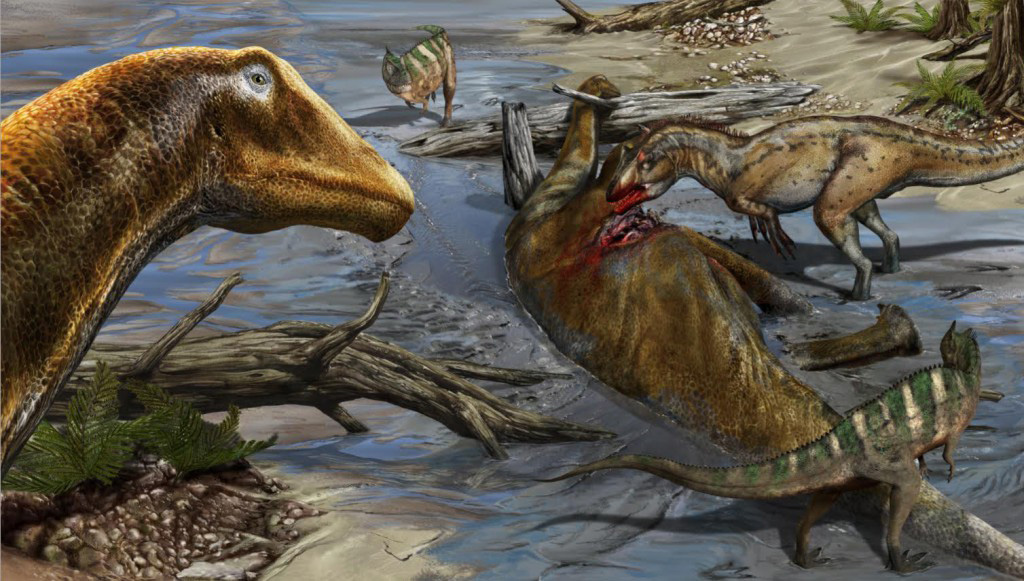Carnosaurs were Apex Scavengers, New Research Suggests

Carnosaurs may have been terrestrial analogues of vultures, and not predators, according to a new study published in the journal Ecological Modelling.
Carnosaurs are members of Carnosauria, a large group of carnivorous dinosaurs that lived during the Jurassic and Cretaceous periods.
These creatures first appeared in the Middle Jurassic epoch, around 176 million years ago, and became extinct around 66 million years ago.
The most famous and best understood representatives of this group are members of the North American genus Allosaurus.
“Allosaurs were contemporary in time and space with some of the largest herbivorous dinosaurs ever recorded,” said Portland State University paleontologists Cameron Pahl and Luis Ruedas.
“These would have included well-known dinosaurs such as Camarasaurus, Barosaurus, Apatosaurus, Diplodocus, Brontosaurus, Supersaurus, and Brachiosaurus.”
“Brachiosaurus in particular once was considered the largest land animal to have ever lived and could have been up to 21 m (70 feet) long and 64 tons in weight.”
“Supersaurus were over 33.5 m (110 feet) in length and weighed up to 40 tons.”
“If these giant dinosaurs died primarily of natural causes, such as disease, starvation, and exhaustion, as is typical of many modern herbivore populations, their carcasses would have been plentiful enough to sustain viable populations of allosaurs even without these undertaking any predatory behaviors.”
The researchers supported their hypothesis with a robust agent-based model, which simulated the relationship between carrion resources (carcasses) present in the Late Jurassic Morrison Formation and the food energy requirements of allosaurs.
They further examined morphological attributes of allosaur skulls, including the extent of binocular vision in predators versus scavengers, as well as ecological data from fossils, such as relative population numbers in predators, herbivores, and scavengers.
The relative fragility of the skull and dentition of allosaurs had already cast doubt on these dinosaurs being predators.
In addition to this shortcoming, allosaurs did not have the binocular vision required to be a successful predator: it was only 30% that of Tyrannosaurus rex, and 15% that of a modern lion’s.
“Our results may explain why carnosaurs like allosaurs did not evolve powerful bite forces, binocular vision, or advanced cursorial adaptations,” the scientists said.
“Given the enormous supply of sauropod carrion, they were under no resource-based selective pressure to overpower prey and may have evolved as terrestrial vulture analogues.”
“This also may explain why the absence of sauropods in certain environments led to more obvious predatory adaptations in theropods such as tyrannosaurs.”
“Tyrannosaurs may have been forced to meet their energy budgets by hunting, because non-sauropod carrion production was too low to support them passively.”
_____
Cameron C. Pahl & Luis A. Ruedas. 2021. Carnosaurs as apex scavengers: Agent-based simulations reveal possible vulture analogues in Late Jurassic dinosaurs. Ecological Modelling 458: 109706; doi: 10.1016/j.ecolmodel.2021.109706
Source: www.sci-news.com/








